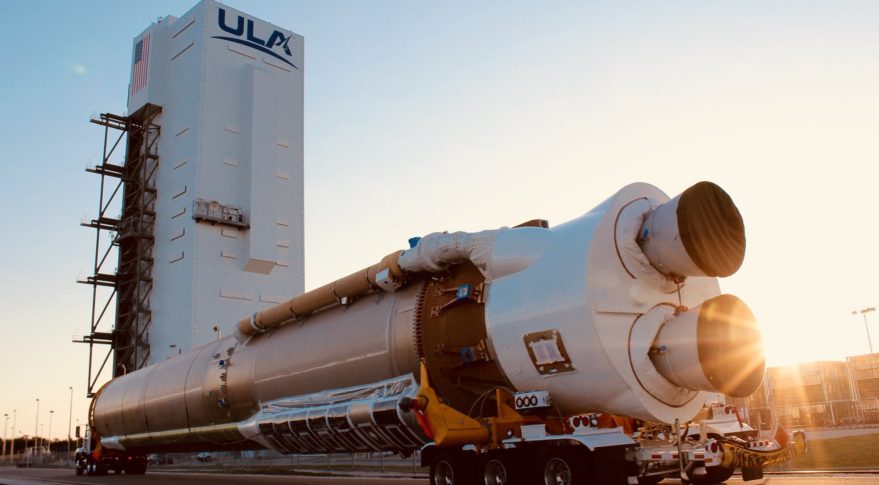Upcoming Atlas V Mission Will Launch Air Force Cubesat Before It Releases Main Payload

WASHINGTON — A United Launch Alliance Atlas V rocket scheduled to launch a $1.1 billion military communications satellite on Thursday will carry an experimental cubesat as a rideshare payload on the back of the Centaur, the Atlas' upper stage.
The main payload is the fifth Lockheed Martin-built Advanced Extremely High Frequency satellite, or AEHF-5. For this mission, the Air Force integrated a 12U cubesat on the Centaur's aft bulkhead carrier. The rideshare payload will be separating before the primary payload separates, said Col. Shane Clark, AEHF-5 mission director at the Air Force Space and Missile Systems' Center Launch Enterprise Systems Directorate.
"It's the first time SMC separates a rideshare payload prior to the anchor mission," Clark said on Monday during a conference call. The cubesat will be used to test orbital debris tracking technologies.
Related: Atlas V: Reliable, Flexible Rocket
The Atlas V aft bulkhead carrier was originally developed for the National Reconnaissance Office to take advantage of excess capacity on big rocket to put small payloads into orbit. A newly created Launch Enterprise Manifest Office married up the the cubesat with the Centaur for the AEHF-5 mission. Clark said this is the first multi-manifest space vehicle integration executed by the new office.
The mission is on track to lift off from Space Launch Complex-41 at Cape Canaveral Air Force Station on Thursday. The rocket will fly in its most powerful configuration, the Atlas 5 551. The AEHF satellites in geosynchronous Earth orbit provide nuclear-survivable, protected communications for strategic command and tactical warfighters. They are used by the U.S. military and international partners Canada, the Netherlands and the United Kingdom.
Clark said the Air Force wants to continue to find ways to use space vehicle capacity as efficiently as possible. "We haven't in the past separated rideshares before the anchor mission," he said. "The mission design of this one allows us to do that." The new manifest office at SMC will be responsible for integrating rideshares "when we have anchor missions that have some excess capability."
Get the Space.com Newsletter
Breaking space news, the latest updates on rocket launches, skywatching events and more!
Gary Wentz, ULA's vice president for government and commercial programs, said he does not anticipate any further delays to the AEHF-5 mission that was originally scheduled for June 27. The date had to be pushed back after a component failed during final acceptance tests. "The teams removed the suspect hardware from all our launch vehicles," said Wentz. "We are in the process of incorporating some minor changes to the hardware. We have retested and reinstalled the hardware on the vehicle."
AEHF-5 will be ULA's 134th launch since the company was formed in 2006. It will be the ninth for the Atlas 5 in the 551 configuration with five solid rocket boosters.
- Read SpaceNews for the Latest Space Industry News
- Atlas V: Reliable, Flexible Rocket
- Air Force Satellite is the 'Largest Uncrewed Structure in Space'
This story was provided by SpaceNews, dedicated to covering all aspects of the space industry.
Join our Space Forums to keep talking space on the latest missions, night sky and more! And if you have a news tip, correction or comment, let us know at: community@space.com.

Sandra Erwin covers the military and national security beat as a Senior Staff Writer at SpaceNews. Sandra, based in Arlington, Virginia, specializes in Defense Department and Intelligence Community space programs, policy, budgets, technology and the industry that supports this sector. She joined SpaceNews in October 2017. Before coming to SpaceNews, Erwin covered the U.S. military, the Pentagon, Congress and the defense industry for over two decades as editor of the National Defense Industrial Association's National Defense Magazine and Pentagon correspondent for Real Clear Defense.










